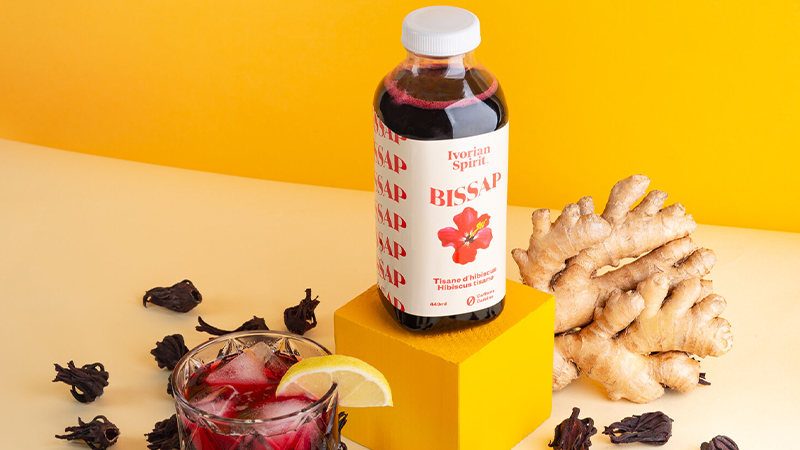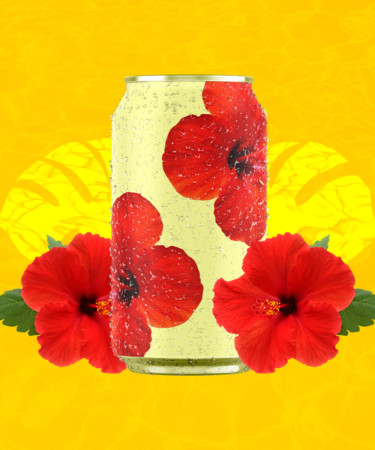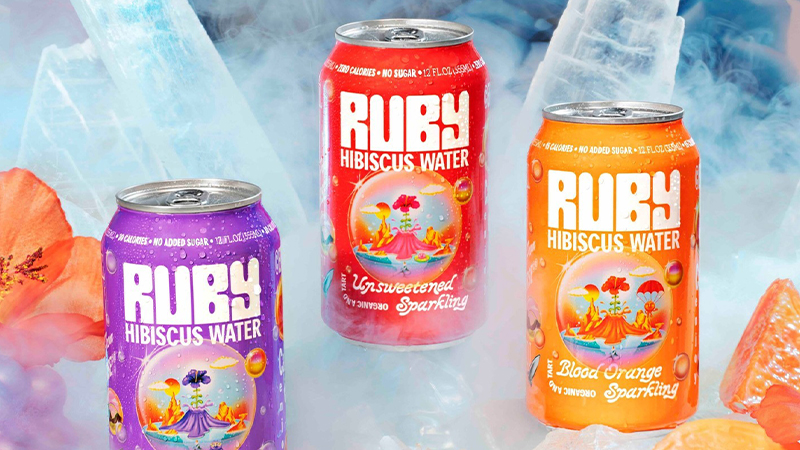It all started with a Starbucks drink — or so Snaxshot founder Andrea Hernández tells me. When the coffee chain launched its Very Berry Hibiscus Refresher in 2012, it introduced millions of Americans to the flavor of hibiscus for the very first time. Whether it was the ingredient’s tart, floral flavor, countless health benefits, or its vibrant pink hue that caught our eyes, it didn’t take long for the nation to fall in love with hibiscus, prompting the subsequent boom of foods and beverages flavored with the flower.
At the time, Hernández thought hibiscus was about to get the matcha treatment. Ten years later, she jokes that she manifested the flower’s rise to fame. Indeed, we’ve officially entered what Hernández is calling “hype-biscus,” with the flavor invading grocery store shelves around the country in cans and bottles that are just as bright as the liquids inside them.
Today, it’s hard to find a beer aisle that’s not stocked with at least one hibiscus-infused sour, and insider-y brand Lo-Fi Aperitifs features the flower as a key ingredient in its Gentian Amaro. Meanwhile, innovators like Ruby are bringing hibiscus further into the non-alcoholic space with sparkling and still hibiscus waters.
And while countless American brand founders have been guilty of appropriating culturally significant flavors and brand identities, Hernández says that most hibiscus beverage brands have done a good job of celebrating where the ingredient comes from. For Ruby, that celebration comes in the form of a simple yet thoughtfully crafted About page, which provides information about the different species of hibiscus, as well as the various regions they come from. A plus? “The visuals and everything are just ‘chef’s kiss’ for people like me, who are very into trendy packaging,” says Hernández.
Meanwhile, brands like Berry Bissap, Ivorian Spirit, and Nuba Tisane herbal teas highlight specific hibiscus-growing areas; the former two use West African hibiscus and the latter steeps flowers from Egypt. Each brand’s website features an homage to the hibiscus from the founders’ home countries, which goes a long way toward educating North Americans about the ingredient that, for the brands’ founders and their families, represents much more than just a fleeting trend.

In an era when Negronis are blue and “rosé all day” is a commonly heard summer mantra, it may come as no surprise that the hot pink flower is buzzier than ever. But the trend may signify more than just America’s love for all things eye-catching. “The overall movement they’re trying to promote is, ‘Sugar gets to have all the fun, we want tart to be able to join the fun,’” Hernandez says. Although the American palate has long craved all things saccharine, the move toward the brighter, more sour flavor indicates a Western curiosity for exciting regional drinks like tepache, and zesty flavors from abroad such as yuzu and lychee.
The flavor’s prominence also echoes consumers’ general interest in health-promoting beverages. Whether we want to admit it or not, Hernandez says, millennials are aging and “need something cooler than Raisin Bran and Metamucil.” Perhaps that’s where hibiscus waters and teas come in. Either way, it seems it’s certainly time for hibiscus to have its long-overdue moment in the sun.

